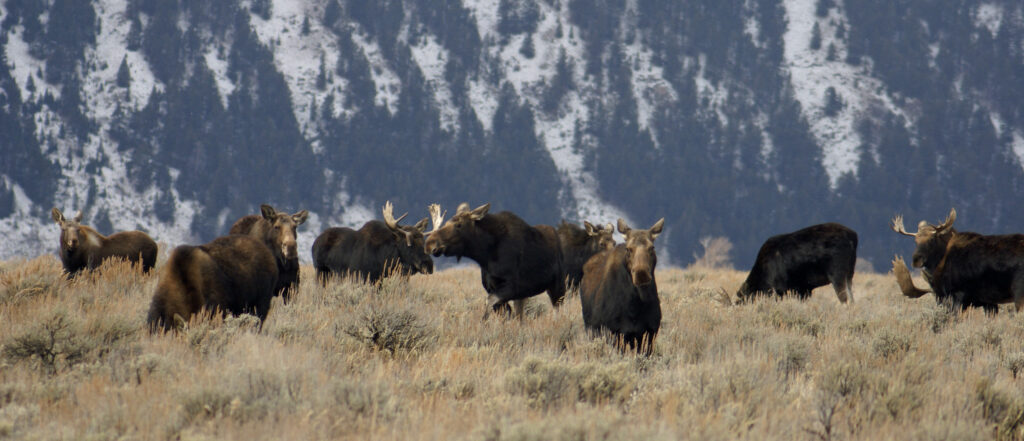We’re told by Euronews.green “How a ‘mosaic forest’ is helping France adapt to rapid climate change”. And you might be thinking yeah, that would be the process whereby trees love CO2 and the more of it there is the better they grow, in colder, dryer places as well as in the areas to which they have retreated as the planet has cooled since the Middle Ages, and species move about as conditions change. But if so you would not make a suitable correspondent for Euronews.green: the plan now is for a committee of government planners to tell the forests how to grow better.
To wit:
“As manager of France’s public forests – 17 million hectares in mainland France – the ONF [Office National des Forêts] is looking for solutions with ‘a +4°C scenario by 2100’ in mind. France has warmed by around 1.8°C since the beginning of the 20th century.”
And not asking questions like “What dunce thinks France will warm by 4°C in the coming 77 years?” Instead they’re reporting that:
“‘We’re trying to make the forest absorb a 10,000-year thermal shock in 10 years’, says Albert Maillet. The solution lies in diversifying species, he says, even introducing ‘southern’ or ‘foreign’ species further north.”
Maillet being the “Director of Forests and Climate Risks” at the Office National des Forêts. And in some sense it makes sense for a National Forest Office to have a Director of Forests. But in another it does not, because forests are natural phenomena that are not generally better if humans decide how they should grow instead of trusting, what’s that thing again, oh yeah, natural selection. Them evolutions. As you’ll know if you’ve seen a tree plantation, or observed the tragic history of recent efforts at forest management that have promoted runaway wildfires.
Left to their own devices forests have, of course, changed in response to changes in climate since the invention of the tree. (Which seems to have been in the Devonian, between 350 and 420 million years ago, though deciduous trees came later than conifers.) And as Wikipedia explains after a bunch of rhubarb about lycophytes and gymnosperms:
“When the climate cooled 1.5 million years ago and the first of four glacial periods occurred, the forests retreated as the ice advanced. In the interglacials, trees recolonised the land that had been covered by ice, only to be driven back again in the next glacial period.”
Without cavemen telling them where to go. Weird, huh? But now the French have decided a mix of trees is more resilient. Cool.
Still, they mostly seem to be wretched natural species. Whereas, the Guardian crows under the headline “Could superpowered plants be the heroes of the climate crisis?”, man has made a better plant. Possibly a triffid. But they’re not worried:
“In an asphalt-surrounded greenhouse at the back of a business park in Hayward, California, on the shores of San Francisco Bay, a sea of more than 200 leafy, green, hybrid poplar saplings are itching to break free from their pots. Among them stands Maddie Hall. The trees are all ‘mother trees’, explains Hall, co-founder and CEO of climate biotech firm Living Carbon. They have been genetically altered (there are about 100 different lines) with the aim of making them better at absorbing carbon dioxide (CO2). The startup company propagates cuttings from the mothers either to study or to send to nurseries for larger-scale production.”
At last we can begin to tree, thanks to Frankentree. Onward and upward:
“There are projects under way around the world to genetically engineer plants – namely crops – for traits such as bigger yields, disease resistance or drought or heat tolerance. But efforts to engineer them to do better at drawing CO2 out of the atmosphere to fight the climate crisis directly are newer.”
Alas, as Bill Gates could warn them, the more CO2 the thing sucks out of the air while growing and living, the more it will release when it dies and rots, or burns, or some such natural phenomenon. Unless we then bury them all in, say, that asphalt.
The piece concedes that:
“The possible impact of this approach on global CO2 emissions is difficult to quantify – it depends on how significant the gains could be, and how widely it’s deployed. But its proponents are bullish that if scaled up it could make a significant contribution and buy the world some time.”
Or not, since there’s already been a massive greening over the past 40 years as plants brilliantly adapted even to the most difficult environments, such as cactuses, have feasted on “carbon pollution” and colonized the most dismal stretches of arid, chilly scrub. Almost as if Darwin had been right.
The busybodies have also reinvented the diet, of course, and as usual discovered that we normal shlubs have been eating all wrong. The i announces that “Climate-friendly diet rich in grains, fruit and nuts reduces risk of early death, study finds”. And of course they’ve been trying to feed us salad and grains ever since the government declared war on obesity in the 1970s and we swelled up like dirigibles. But now it’s climate-friendly. Or rather, it’s better than all that ghastly meat. And just wait until we’re eating the fake plants of the future.



Trees don't incorporate CO2, they make more tree. They are making more tree because there is more co2, if they want to use this to sequester carbon then they need to eliminate all the micro-organsims that cause the read ones to decay. Then we would go back to building future coal reserves. Of course in the meantime we would be buried under all the non decaying dead plant life.
These people never ever think
Forestry is a profession (guild) like all others that, in seeking funding for academic and research pursuit or simply to maintain "professional" monopoly 'right to practice' status, must join the climate chorus (Think Doctors amid the COVID authoritarianism). Of all the captured institutions including professions, the state is most coercive and evil and nothing feeds it like exploited crises: manufactured, exaggerated, or real.
“All within the state, nothing outside the state, nothing against the state.” - Benito Mussolini
John, I think you've got it.
Well, we allow tree to grow, we cut it down, build a house with it. We lock the carbon in the building for 30, 50, 100 years. Depends how well we build.
When we plant new trees, or leave seed trees to grow new trees, they absorb carbon faster than old 100 year old tree, that is in life support in nursing home.
If we burn a tree to make electricity, LOL, we cut down a tree and presto, we burn it to make 2 watts of power in 3 seconds. It takes 20 years to reach the size we cut it of. Not green f..n power